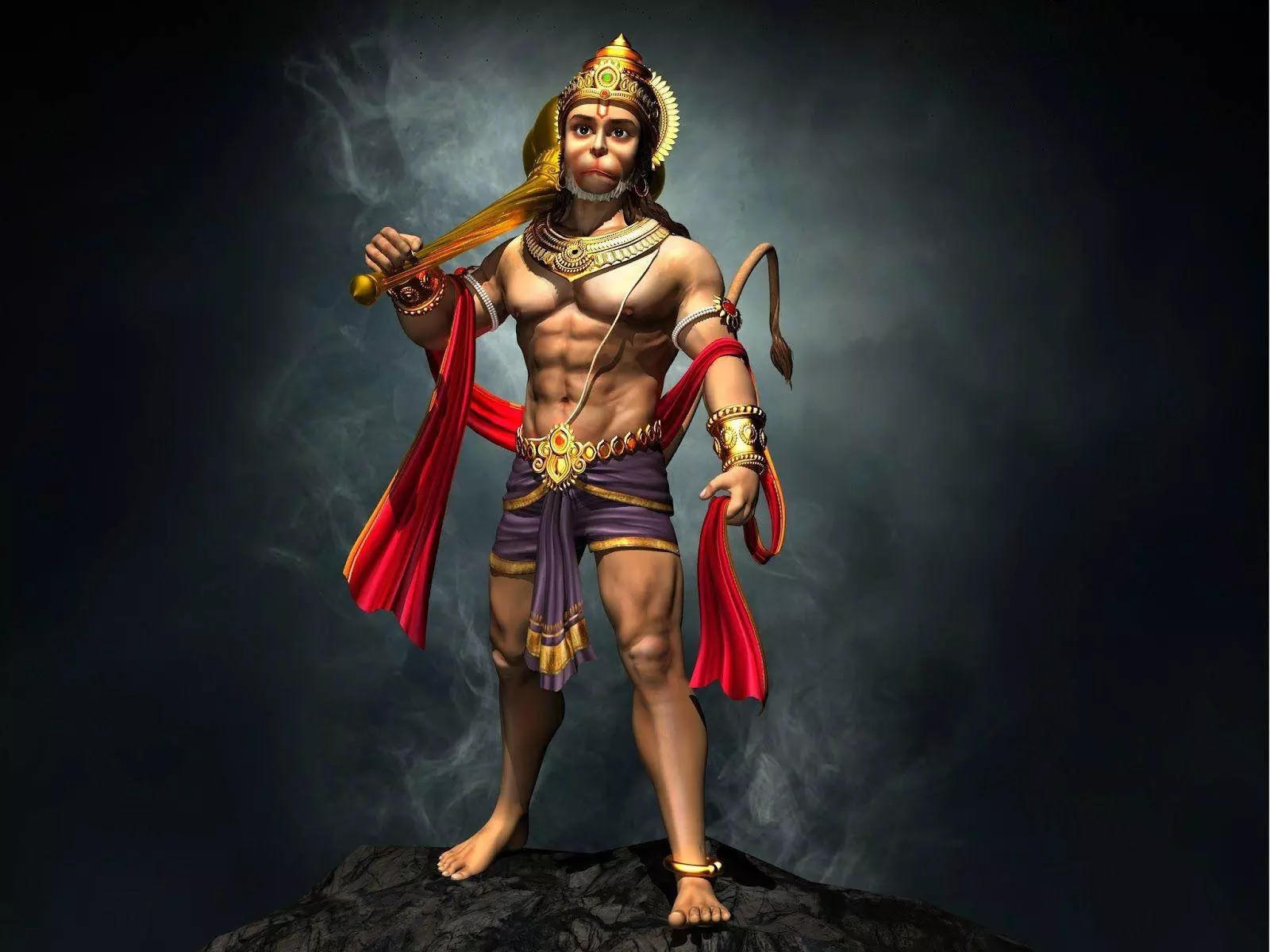
Hanuman Chalisa
Hanuman—the epitome of devotion, strength, and courage—is a beloved figure in Hindu mythology. Known as Lord Rama’s most loyal devotee, millions around the world revere and worship Hanuman. One of the most popular hymns dedicated to Hanuman is the Hanuman Chalisa. This sacred text holds great significance in Bhakti Yoga and is recited by devotees to seek blessings, protection, and strength from Hanuman. Through the melodic rhythm and enchanting lyrics, this hymn leaves an indelible imprint on the hearts and souls of those who recite it with devotion.
 Who is Hanuman?
Who is Hanuman?
Hanuman, also known as the “monkey god”, is a prominent deity in Hindu mythology revered for his unwavering devotion, strength, and loyalty. He is considered the greatest devotee of Lord Rama, the seventh avatar of Lord Vishnu. Hanuman is depicted as a monkey-faced god with a muscular physique, symbolizing his immense power and agility. He is the son of the wind god Vayu and Anjana; hence, he inherits immense power and speed. He is widely worshipped across India and is revered as a symbol of courage, dedication, and selflessness.
The most famous story associated with Hanuman is his role in the epic Ramayana, where he plays a pivotal role in the rescue of Lord Rama’s wife, Sita, from the demon king Ravana. His steadfast faithfulness, selfless love and unwavering loyalty to Sita and Rama is an inspiration to practitioners of Bhakti yoga as he uses his powers not for self-gain but selflessly in service to the divine.
 What is Hanuman Chalisa?
What is Hanuman Chalisa?
The Hanuman Chalisa is a devotional hymn in praise of Hanuman, composed by the poet-saint Tulsidas in the 16th century CE. The Chalisa is often recited as a chant or sung as a devotional song by devotees seeking Hanuman’s divine intervention and protection. This sacred text is written in Awadhi, a language closely related to Hindi. The Hanuman Chalisa consists of 40 verses, each known as a “chaupai” and two introductory couplets called “dohas.” The word “Chalisa” is derived from the Hindi word “chalis,” which means forty.
In these 40 verses, Tulsidas eloquently describes the auspicious form, knowledge, virtues, powers, and bravery of Hanuman. The hymn also narrates the great acts of Hanuman in serving Rama during his battles against evil forces, as depicted in the Ramayana.
 Meaning of Hanuman Chalisa and its Philosophical Interpretations
Meaning of Hanuman Chalisa and its Philosophical Interpretations
The Hanuman Chalisa is a poetic expression of the profound reverence and adoration towards Lord Hanuman. Each verse sheds light on Hanuman’s extraordinary acts of courage, his unflinching devotion towards Lord Rama (also known as ‘Sri Rama’), his intelligence, and his boundless power. However, the underlying philosophical interpretations go beyond the literal meaning.
In the spiritual context, Hanuman symbolizes the human mind, which when disciplined and focused, can perform remarkable feats and overcome challenging obstacles, just like the ‘destroyer of demons`. The ‘sacred thread’ he wears signifies purity of speech, thought, and action. The journey of ‘thousands of miles’ represents the constant pursuit of truth. His triumph over the ‘demon king’ is a metaphor for man’s victory over the vices within.
 Chalisa’s Role in Spiritual Practice and Bhakti Yoga
Chalisa’s Role in Spiritual Practice and Bhakti Yoga
The Hanuman Chalisa is not just a hymn of praise; it is also a spiritual tool that plays a pivotal role in Bhakti Yoga (the yoga of devotion). Chanting or singing the Chalisa is a practice that helps in fostering a personal relationship with the divine, through love and devotion. For many, the regular chanting of the Hanuman Chalisa becomes a form of meditation, aiding in the development of concentration, and eventually leading to a higher level of spiritual awakening.
 Tips on Learning to Chant the Hanuman Chalisa
Tips on Learning to Chant the Hanuman Chalisa
Embarking on the journey of learning to chant the Hanuman Chalisa can be an enriching and transformative experience. The goal of learning to chant this prayer is not just about perfecting the words, but about immersing yourself in the beauty and spirituality of the hymn. Here are some helpful tips to guide you on your path:
1. Start Slow and Focus on Pronunciation:
The Hanuman Chalisa is written in Awadhi, an old form of Hindi. As such, it may contain words and phrases that are unfamiliar to beginners. Start by chanting slowly, focusing on the pronunciation of each word. With time and practice, you’ll become more comfortable with the language.
2. Listen to Recordings:
Another effective way to learn to chant the Chalisa is by listening to audio recordings. This can help you understand the correct intonation, rhythm, and pronunciation.
3. Practice Regularly:
Consistent practice is key to mastering the chant. Try to incorporate the Chalisa into your daily routine, even if it’s just for a few minutes each day. Over time, you’ll see progress in your ability to chant fluently.
4. Chant with Devotion:
The power of the Hanuman Chalisa lies not just in the words, but in the devotion with which they are chanted. As you chant, try to focus on the meaning of the verses and connect with the divine energy of Hanuman.

